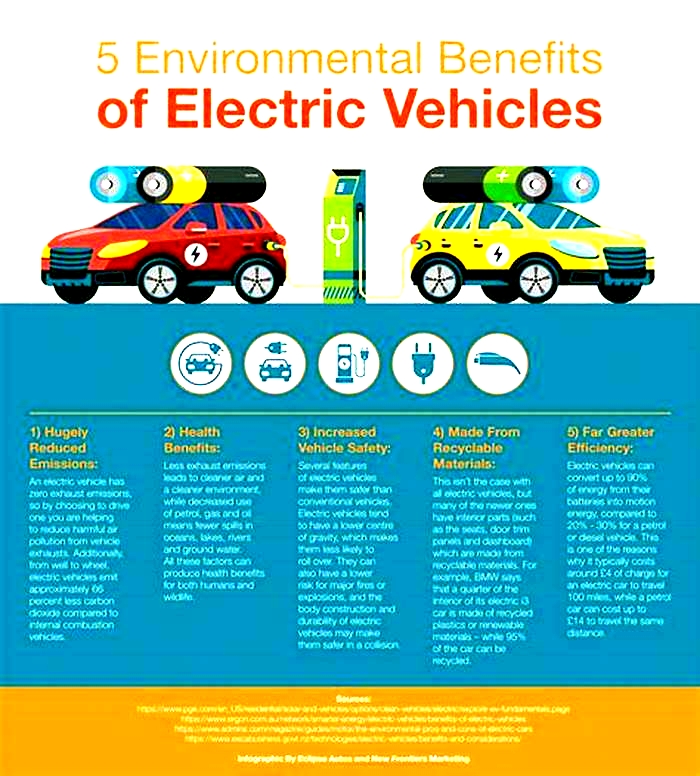Exploring Electric Vehicle Architecture Designing the Cars of Tomorrow

Related Articles
Adoption of Electric Vehicles (EVs) in private and commercial passenger vehicles is seen as a way for decreasing Greenhouse Gas (GHG) emission and to mitigate the climate change problems. Emission norms pushed the efficiency of the ICE engines to the higher level and manufacturers as well as regulators have taken significant initiatives to develop technologies to further curb the emission levels. The effective efficiency of an Internal Combustion Engine (ICE) due to various efforts has reached to ~35%, but still it bit less than the battery-operated electric motor, which is around 65%. Hence, among all these efforts and initiatives, the move towards electrification of transportation seems to be the most viable long-term solution. As a result, such developments & push by govt. forcing todays vehicle manufacturers and suppliers to look for solutions and systems that promote the development of vehicle (electrical) architectures that allow the industry to transit from ICEs to the EV seamlessly.
The sub-systems in the existing vehicles such as air conditioning systems, electric steering, seat controls, anchor break, air bags, wipers, headlights, USB charging ports, etc. are already powered using low voltage electric supply. The low voltage electric supply to these sub-systems is obtained by using alternator (which is coupled to the engine) & from the suitable battery. New designs need to consider demand of existing architectures & challenges of future technology adoption. Thus, from the OEM point of view, vehicle architecture needs to be flexible enough so that it can adopt drivetrain electrification quickly using existing platforms. Modularity and reusability of existing architectures will make this transition smoother. Future platforms should have significant adoptions from todays vehicle architecture.
While designing a Vehicle Architecture and respond to challenges thrown by the electrification of a vehicle, the key attributes needs to be considered are as follows:
- Power delivery path for components which use other than the electrical system (breaks, suspension control, steering, cooling);
- The electrical power demand of various sub-systems (e.g. infotainment systems, power windows, air-conditioning);
- Drive cycle-based torque/power requirements for all operating modes;
- Overall energy supply and management needs (including charging and regeneration capability utilization);
- Technical specifications for Products (e.g. opportunity of charging, quick charging, gradient, standards, drive cycle efficiency);
- Interaction with the external world (e.g. communication, bi-directional power transfer);
- Adoption of different energy sources (e.g. fuel cell, battery & its combination);
- Overall weight & volume of various components (battery, traction, air compressor);
- Cost, reliability & other key parameters related to technology maturity (e.g. use of silicon carbide-based system for dc-dc, inverter);
- Safety related parameters (e.g. use dual energy sources while powering aux systems such as battery management system, traction control system & vehicle safety system)
- Communication system layer (e.g. CAN for inter ECU communication, gateways for communications with the external world (charging infrastructure));
- Wiring harness and its placement (e.g. HV and LV system and its routing);
Electric Architecture (EA)
Traditionally, the electrical architecture in the ICE vehicle played a limited role i.e. control low voltage distribution, head lights, display, cooling, cranking systems etc. It did not control the flow of the power or energy in the vehicle, it only provided pulse discharge capacity for ICE engines. Due to the drastic reduction in the components used in the EV system, the role of VCU became more predominant as compared to ICE engine systems. Same is the case with the communication layer that connects each component to the VCU. Understanding, designing and developing the Vehicle Electronic Control Unit (VECU) & Electrical Architecture are crucial for the functioning of EVs. The concept of Watt-hour/per km (Wh/km) or quick charging capability of battery packs were not part of design & trade off analysis. Thus, the EA needs to be reliable, efficient, fault tolerant, safety- as well as EMI/EMC compliant and it should allow the user to realize all operating modes of EVs (e.g. regular- sports- orutility mode).
EA plays an important role in handling and responding to the complexity of technology and vehicle features like for Electrification, ADAS, connected systems and for number of ECUs, which are interconnected by various vehicle network topologies with a distributed functionality. An architecture needs to test and validate various use cases related to normal, abnormal, safety, functionality and interoperability. The following key vehicle control strategies need to be considered, while designing the electrical architecture:
- Traction control (including Regeneration control);
- Body and chassis control;
- On board/Off board charger control;
- Battery Management system control;
- Auxiliary power system and its control;
- Communication Interface control (components internal to vehicle and external tovehicle);
- Controls required for standard & safety compliance;
Electrical Architecture & Design Approach
Due to increasing complexity and issues arising through various advanced control features such as bi-directional power flow, super quick charging capabilities of batteries the workflow need to adopt to a system of systems design approach. A typical approach, that can be used while designing an EA for a vehicle architecture is shown in Figure 1.
Figure 2 shows EA & typical key components with functional description of each component.
EA to Drive Future EVs
An Electrical Architecture, due to its inherent nature, allows seamless integration of various futuristic technologies (e.g. Fuel Cell into BEV) in todays vehicle. This requires special attention while designing & adopting an architecture which fulfils todays need and allows the design to respond to tomorrows challenges. The future EA will enable vehicles to function faster and respond quicker to the infrastructure, which will be also more connected and smarter. An EA drives EVs as bi-directional power flow systems to interact with smart grid and a connected infrastructure. Todays EV platforms are evolving towards multi sensor and automated driving technologies In this journey the EA will play a key role in collaborating, securing, self-learning, self-healing and connecting to each ECU and to the master VCU and the electric vehicle architecture will have to communicate, act and control faster to get the expected outcome.
We at KPIT have a capability to work on technologies from functional requirements or productions requirements till the final EV system architecture of the production development which covers wiring diagram, ECU control, power distribution, functionality and safety standards to achieve the electrification.
Evolution of the Vehicle Architecture: Whats Next?
Posted: November 9, 2021
Domain consolidation has long been a concept just around the corner for the mobility industry. But were only now reaching a turning point that requires new thinking about what the E/E architecture of a vehicle should look like for the future. At the recent 2021 WCX Digital Summit, the Evolution of the Vehicle Architecture roundtable discussion explored the speed and scope at which these changes will happen. Here are some of the key takeaways.
1. Traditional vehicle architecture is no longer sustainable.
Panel moderator Glen De Vos, Senior VP and Chief Technology Officer at Aptiv, explained the challenges todays fragmented vehicle architecture pose amidst rapidly advancing vehicle technologies and consumer demands: When we think historically about vehicle architecture, I add a function to the car and I add a piece of hardware to the car, and then I have to connect them all up. He added: Over time, that fragmented, distributed approach has resulted in vehicles with up to and over a hundred different controllers, hundreds of millions of lines of code, all developed independently practically thousands of functions that have massive interdependencies. When you think about that approach, and then todays environment where we have a significant amount of software-enabled functionality coming into the vehicle, it simply doesnt have the capability to manage it. It creates massive problems from the standpoint of developmental complexity involving understanding the software, getting it to work effectively together, along with then validating that code. It creates massive complexity for the industry in terms of building the vehicles and the manufacturing aspects of that.
Panelist Doug Thornburg, former Manager of Research and Advanced Electrical Architecture at Ford Motor Company, weighed in: The type of features were trying to develop are becoming more complex. The functionality that customers expect is more sophisticated and more nuanced, so that in turn drives more and more interfaces that have to be managed in order to deliver the features. And from our customers perspective, they expect these features to be coming much more quickly.
2. Harnessing the power of the software-defined vehicle will require a new approach.
De Vos described current product life cycle management as a static sell it and forget it model. Moving forward, he said, will require abstraction of software from hardware separating the software from the underlying hardware so that it can be managed as a platform over time. Along with that, to make compute and to make the actual electrical architecture manageable, is a separation of IO from compute, De Vos explained. This then ultimately enables us to serverize that compute, bringing together the disparate domains into more centralized, high-performance compute that allows you to get economies. That allows you to support the massive processing required as well as the software functionality. And that really unlocks that software-defined vehicle.
3. Software-defined architecture will change the way we look at the vehicle lifespan.
Panelist Markus Lipinsky, Managing Director at Aptiv, talked about how the unfinished product concept pioneered by Tesla is one of the major drivers of disruptive change in the industry right now. They came up with this concept of the software update that continuously improves the product, and that concept has numerous advantages, he said. I can keep the vehicle fresh much longer. I can also keep my vehicle secure much longer, and as a result, I have a much higher residual value of my vehicle.
Lipinsky explained that implementing the unfinished product model presents obstacles for incumbent OEMs, because suddenly you need to keep the whole engineering workforce so 3,000 to 4,000 engineers over the lifecycle of the entire vehicle. We need much more advanced architectures to accomplish such a great concept.
4. As we forge ahead, there are valuable lessons to be learned from other industries.
JF Bastien, a software architect at Woven Planet Holdings,talked about the need to be able to manage large-scale software failures as vehicle architecture evolves. He pointed to IT companies that have mastered this capability over the years: I think theres experience there that we can transfer to the vehicle industry thats really interesting, involving these long-tail sets of failures.
De Vos concurred: We can learn lessons from other verticals from IT, from other industries that have gone through similar transformations that have gone to more abstraction of software from the underlying hardware, the containerization and the ability to have APIs that allow you to do feature development on top of base software in a decoupled manner, really opening up the developer community. I think its important for us to look across the industry to where we can learn from what others have already done successfully.
Access the full ebook with even more great content.
Like what youve read so far? This is just the tip of the iceberg, so dont miss next years event! Register today to reserve your spot for WCX 2022.
Electric Vehicle Systems Architecture and Standardization Needs
Overview
- Editors:
- Beate Mller
VDI / VDE Innovation + Technik GmbH, Berlin, Germany
- Gereon Meyer
VDI / VDE Innovation + Technik GmBH, Berlin, Germany
- Presents the official publication of the European Green Vehicle Initiative PPP
- Includes research results of European R&D projects on electric vehicles
- Written by experts in the field
- Includes supplementary material: sn.pub/extras
Access this book
Other ways to access
Table of contents (9 papers)
Invited Papers
- Peter Van den Bossche, Noshin Omar, Thierry Coosemans, Joeri Van Mierlo
Pages 3-20
- Neil Adams, Christopher Pickering, Richard Brooks, David Morris
Pages 21-33
Scientific Papers
- Kosmas Kndler, Sylvain Laversanne
Pages 37-54
- Horst Pfluegl, Claudio Ricci, Laura Borgarello, Pacme Magnin, Frank Sellier, Lorenzo Berzi et al.
Pages 55-73
- Andrew Cockburn, Jenny Wang, David Hopkinson, Marco Ottella, Fabrice Marion, William ONeill
Pages 75-89
- Frdric Holzmann, Volker Scheuch, Pascal Dgardins
Pages 91-104
- Alastair R. Ruddle, Rob Armstrong, Ainhoa Galarza
Pages 105-115
- Ovidiu Vermesan, Mariano Sans, Peter Hank, Glenn Farrall, Jamie Packer, Nicola Cesario et al.
Pages 117-141
- Andras Kovacs, Robert Schmidt, Dave Marples, Raduz Morsztyn
Pages 143-157
About this book
This edited volume presents research results of the PPP European Green Vehicle Initiative (EGVI), focusing on Electric Vehicle Systems Architecture and Standardization Needs. The objectives of energy efficiency and zero emissions in road transportation imply a paradigm shift in the concept of the automobile regarding design, materials, and propulsion technology. A redesign of the electric and electronic architecture provides in many aspects additional potential for reaching these goals. At the same time, standardization within a broad range of features, components and systems is a key enabling factor for a successful market entry of the electric vehicle (EV). It would lower production cost, increase interoperability and compatibilities, and sustain market penetration. Hence, novel architectures and testing concepts and standardization approaches for the EV have been the topic of an expert workshop of the European Green Vehicles Initiative PPP. This book contains the contributions of current European research projects on EV architecture and an expert view on the status of EV standardization. The target audience primarily comprises researchers and experts in the field.
Editors and Affiliations
VDI / VDE Innovation + Technik GmbH, Berlin, Germany
Beate Mller
VDI / VDE Innovation + Technik GmBH, Berlin, Germany
Gereon Meyer
Bibliographic Information
Book Title: Electric Vehicle Systems Architecture and Standardization Needs
Book Subtitle: Reports of the PPP European Green Vehicles Initiative
Editors: Beate Mller, Gereon Meyer
Series Title: Lecture Notes in Mobility
DOI: https://doi.org/10.1007/978-3-319-13656-1
Publisher: Springer Cham
eBook Packages: Energy, Energy (R0)
Copyright Information: Springer International Publishing Switzerland 2015
Hardcover ISBN: 978-3-319-13655-4Published: 24 March 2015
Softcover ISBN: 978-3-319-36096-6Published: 06 October 2016
eBook ISBN: 978-3-319-13656-1Published: 25 February 2015
Series ISSN: 2196-5544
Series E-ISSN: 2196-5552
Edition Number: 1
Number of Pages: X, 157
Number of Illustrations: 4 b/w illustrations, 75 illustrations in colour
Topics: Transportation, Automotive Engineering, Sustainable Development, Engine Technology, Innovation/Technology Management









